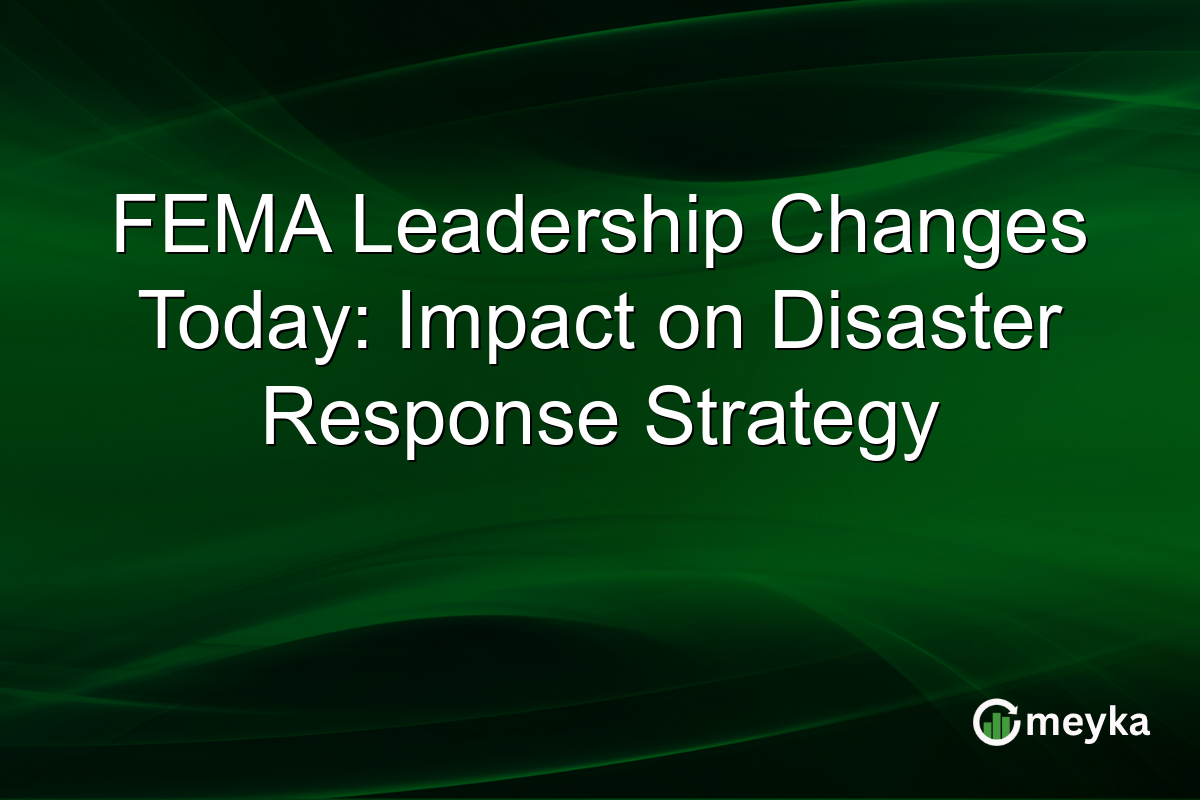FEMA Leadership Changes Today: Impact on Disaster Response Strategy
David Richardson’s resignation as acting chief of FEMA marks a pivotal moment for the agency. As headlines swirl about the proposed restructuring and budget cuts under the current administration, these changes could significantly reshape FEMA’s role in disaster response and management. With Richardson stepping down, questions arise about FEMA’s future direction and the broader implications for public safety and accountability in the U.S.
Effects of David Richardson’s Resignation
David Richardson’s resignation as the acting chief of FEMA has led to a ripple of concern and speculation about the agency’s stability.
According to the USA Today article, Richardson stepped down citing personal reasons, yet this leaves a critical leadership gap. In an organization tasked with coordinating federal emergency management efforts, leadership is crucial for swift and effective disaster response. Without decisive guidance, FEMA might face challenges in implementing effective strategies, particularly when dealing with state-level concerns.
FEMA’s Future Direction Amid Proposed Changes
The future of FEMA under the Trump’s administration agenda poses several questions. Potential budget cuts signal a shift towards a more constrained operational capacity.
In NBC News, it is highlighted that FEMA’s budget could face reductions, which may curtail its ability to respond comprehensively to disasters. This restructuring could mean prioritizing certain types of disasters over others, potentially affecting the agency’s responsiveness and the affected population’s safety.
Impact on Disaster Response Strategy
The leadership change and expected budgetary constraints might transform FEMA’s disaster strategy. With limited resources, prioritizing high-impact areas will be crucial.
Strategies could include leveraging technology for efficient response and prioritizing preventive measures over reactive ones. This pivot would require robust cooperation between federal, state, and local levels to ensure effective management and resource allocation.
Final Thoughts
As we look ahead, the leadership changes at FEMA, particularly David Richardson’s resignation, signal a need to re-evaluate how disaster response can be managed more efficiently. These shifts coincide with broader changes under the Trump administration, challenging FEMA to maintain its efficacy amid reduced funding. For public safety to remain a priority, FEMA’s strategy must adapt to ensure accountability and responsiveness during disasters. Stakeholders at all levels must collaborate to redefine FEMA’s role and capabilities, keeping in mind both immediate needs and long-term strategic goals.
FAQs
Richardson’s resignation leaves a leadership void that could impact FEMA’s ability to coordinate disaster response effectively. Without strong leadership, the agency’s strategic direction and operational efficiency might be compromised.
Potential budget cuts could limit FEMA’s resources, affecting its ability to respond to disasters comprehensively. This constraint could force FEMA to prioritize certain disasters, potentially impacting groups depending on federal assistance.
FEMA might pivot towards utilizing more technology-driven solutions and focusing on preventive measures. This approach requires enhanced collaboration among federal, state, and local agencies to maximize the effectiveness of limited resources.
Disclaimer:
The content shared by Meyka AI PTY LTD is solely for research and informational purposes. Meyka is not a financial advisory service, and the information provided should not be considered investment or trading advice.






